A Home By the Sea: Jubeil Orphanage
A Crusaders’ castle for a classroom. An archaeological site for a playground. Let’s dig into the story of Jubeil Orphanage.
The present-day city of Jbeil has been known by several names with similar spellings. For the purpose of this Dispatch we will use “Jubeil.” This is the version that is used most often in the Near East Relief archives. Alternate spellings include Jubayl, Jebail, Djoubeil, and Gebail. Jbeil is also known by its historical name, Byblos.
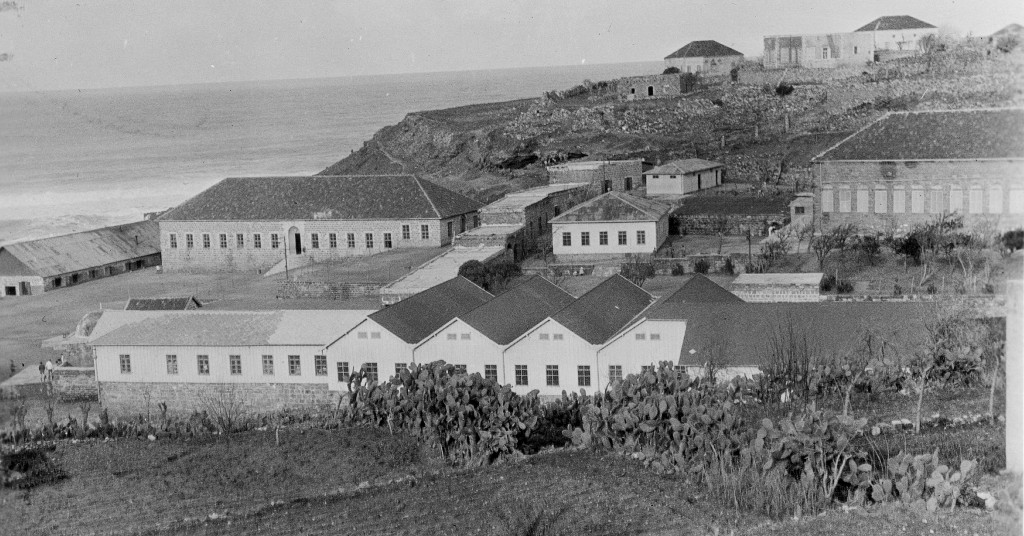
View of the Near East Relief orphanage complex at Jubeil, c. 1923. Nicol Hall (center left) still stands today.
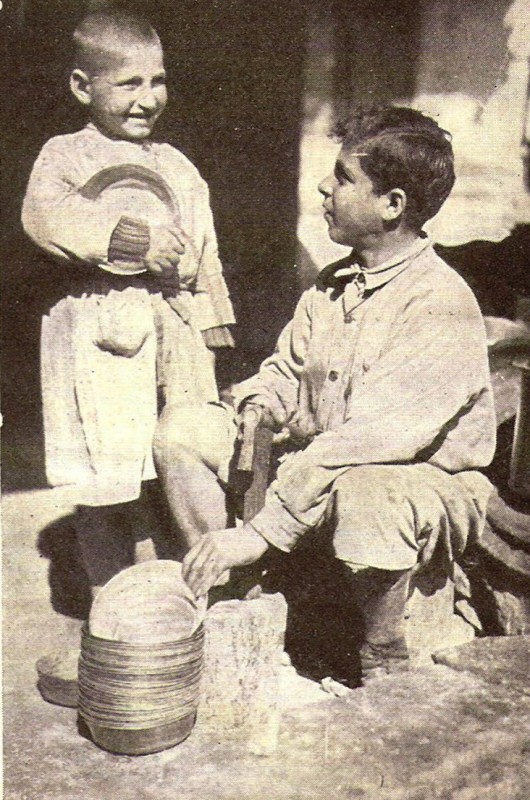
A Desperate Time
A devastating famine struck Syria during World War I; it was the tragic result of a prolonged locust infestation and a supply blockade that occurred at the same time. An estimated 500,000 Syrians died of hunger between 1915 and 1918. Thousands found sustenance at Near East Relief soup kitchens, where relief workers stretched meager food supplies to feed more people. The streets of every city in Greater Syria were filled with children in varying stages of starvation.
By late 1919, the leaders of Near East Relief were faced with an ever-increasing orphan population. An astonishing 54,600 children were living in Near East Relief orphanages in Armenia, Syria, and Turkey. An additional 59,039 children relied on food, clothing, and medical care from Near East Relief.
Near East Relief needed even more orphanage facilities — and immediately, if they hoped to save these children’s lives.
Left: two young coppersmiths at Jubeil, 1925.

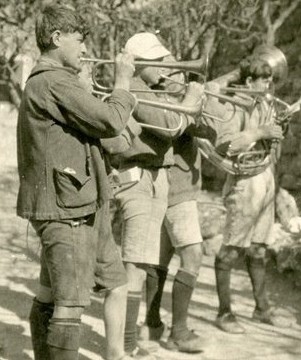
Building a New Home
Near East Relief leaders set out to find a place for a new orphanage in Syria. It was Near East Relief’s habit to rent buildings at a dramatically reduced rate (such was the case with the vast orphanage complex at Alexandropol). Some buildings were donated rent-free. There were two exceptions to this practice: the trade school at Antilyas, and the orphanage at Jubeil were both purchased.
Jubeil, a small city about 25 miles north of Beirut, seemed an ideal location for an orphanage. When Near East Relief had the opportunity to purchase a large piece of land with a few existing buildings, the organization jumped at the chance. With a bit of construction the spacious villa and generous grounds could be re-purposed as an orphanage. Additionally, the seaside climate was thought to encourage good health and to stave off disease.
Near East Relief leaders were particularly attracted to Jubeil’s Biblical connection: it is said that the cedars of Lebanon that were used to build the Temple of Solomon were hewn at Byblos.
Band practice at Jubeil, 1922. Mennonite Church of USA archives.
Thousands of Orphans
Jubeil opened with 1000 boys in 1920. Most of the orphans were from Aintab, north of Aleppo — a journey of more than 20 hours by train. Ray P. Travis served as orphanage director. Mr. Travis had worked as a missionary in Aintab and served in France during World War I.
From day one the boys of Jubeil were expected to be industrious. They built their own dormitories, and helped with building projects at a nearby orphanage housing girls from Harpoot. By 1921 the boys had completed Nicol Hall at Jubeil. The large building, which was named for Near East Relief worker Major James H. Nicol, served as a dining hall and auditorium. The building still stands today — a testament to the skills of the young builders.
Jubeil experienced an influx of new orphans when the French retreated from Cilicia in 1921. At that time Near East Relief determined that Cilicia was no longer safe for orphans, and the children and relief workers began the long journey to safety in other regions. Less than a year later, the Smyrna disaster forced Near East Relief to rethink its operations in Turkey entirely. Thousands of orphans were resettled in Syria, including Jubeil. The boys of Jubeil built additional housing for the new arrivals, most of whom were from Aintab and Marash.
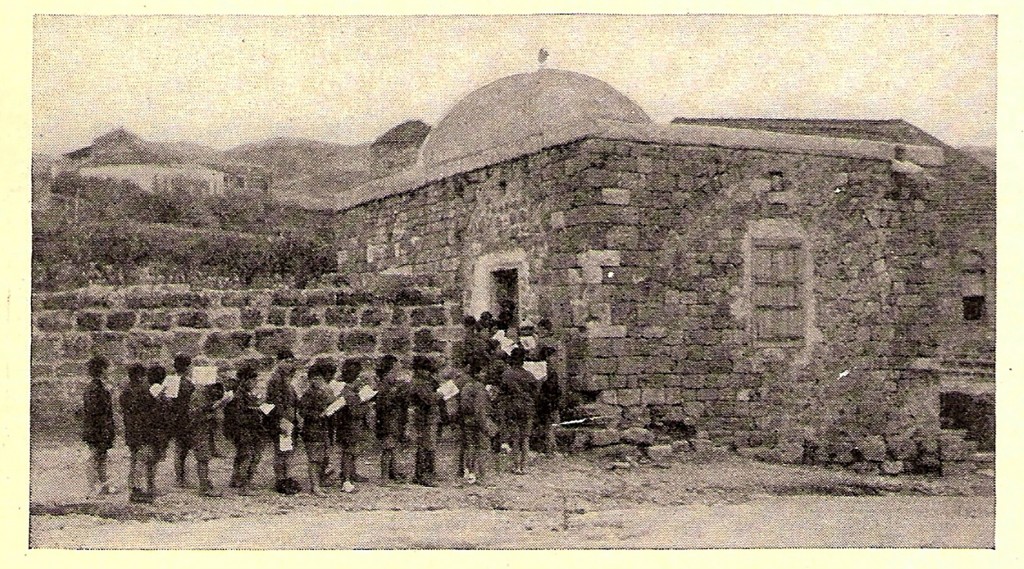
Boys file into a converted mosque for classes. Jubeil, 1923.
Days Full of Learning
Life at Jubeil was not easy. The boys rose early and tidied their living areas: a mattress rolled out on the floor, and a box for personal belongings. They ate a simple breakfast before embarking on the days activities. Like other Near East Relief orphanages, the day at Jubeil focused on education. Part of the day was dedicated to school. The boys attended classes in a converted mosque and an old Crusaders’ castle, where they experienced history firsthand. They also devoted several hours to vocational training, learning such trades as copper and tin smithing, tailoring, furniture making, and carpentry.
One of the busiest places at Jubeil was the bakery. Seventeen boys and three adult baker produced all of the bread for Jubeil and for several other orphanages in the area — about 8,000 small loaves per day. This hearty, filling bread was an important part of the orphanage diet.
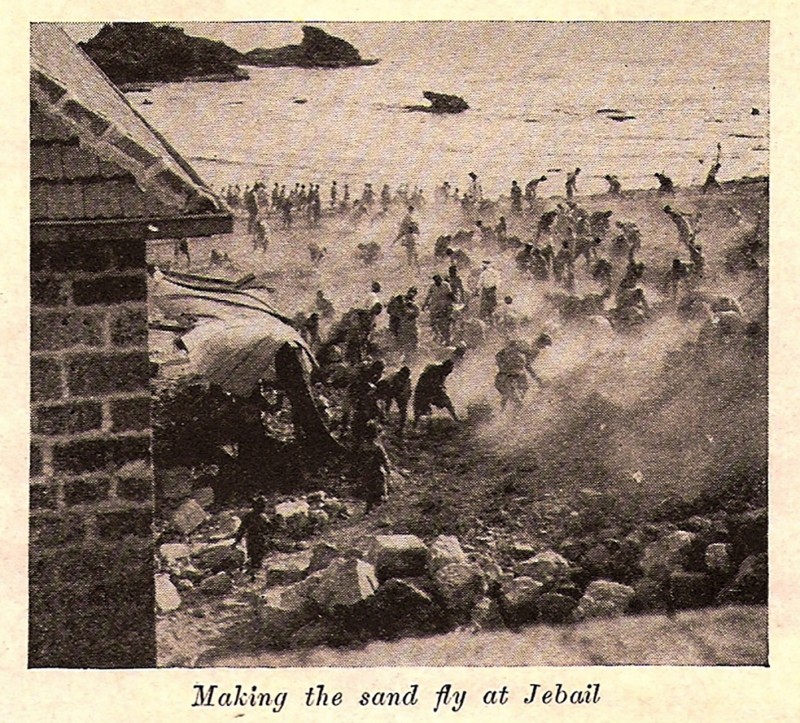
Amateur Archaeologists
There was still plenty of time for play at Jubeil. Director Ray P. Travis was a firm believer in the benefits of fresh air and exercise, and he encouraged the boys to run and play on the large field near Nicol Hall. In fact, a visiting Near East Relief doctor reported that the boys of Jubeil had the healthiest lungs of any children in the Near East Relief orphanages! Many of the boys spent their free time exploring the nearby caves and ruins, which included an ancient Phoenician temple. A French archaeologist had set up the first professional archaeological dig in the region at a villa neighboring the orphanage in 1921. The ruins are now a UNESCO World Heritage site.
Near East Relief worker Nellie Miller wrote fondly about her visits to Jubeil in her letters home. She reported that Jubeil was a two-hour drive from the Near East Relief office in Beirut, but the beautiful place and cheerful boys were worth the trip. Nellie enjoyed a Christmas celebration at Jubeil in January 1923. She noted that each boy had received handkerchiefs, a comb, a penknife, and some candy and nuts. Older boys received a new piece of clothing or a bag; younger boys received tin cars, dogs, and lions to play with. Nellie enjoyed the boys’ Christmas pageant — especially the real live baby, who only cried three times.
Young builders at Jubeil, 1923.
Field day at Jubeil, 1924.
A New Purpose
As the years past, the number of orphans in Near East Relief’s care steadily declined. Near East Relief’s Jubeil Orphanage closed in 1925. The remaining boys were transferred to nearby orphanages, including the boys orphanage at Sidon.
At the same time, Maria Jacobsen’s orphanage for very young children, dubbed the Birds’ Nest, was outgrowing its home in a former Druse palace in Sidon. Near East Relief sold the Jubeil property to Maria Jacobsen and her Danish missionary organization, K.M.A.
The new Birds’ Nest opened at Jubeil in 1928. Ms. Jacobsen continued to operate the orphanage until her death in 1960. K.M.A. ran the orphanage for another ten years. The Catholicosate of Cilicia assumed control of the orphanage in 1970. Today, the Birds’ Nest Armenian Orphanage is home to about three dozen children. One of the original buildings has been turned into a beautiful museum dedicated to the history of the orphanage.
